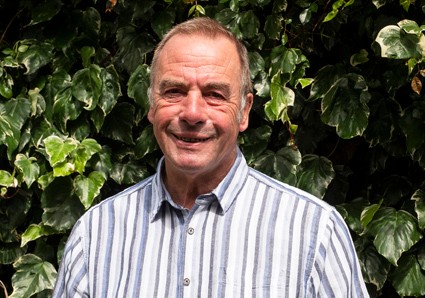In early August, representatives from ‘Smart Communities’ presented a proposal for a new Eco homes development at a Bradpole Parish Council meeting. Focusing on offering affordable housing to people from in and around Bridport, the proposal includes building 215 rental homes at the base of Watton Hill. Leader of the project and founder of ‘Afford a Home West Dorset’, Roy Mathisen explained to Fergus Byrne how the project could be yet another first for Bridport.
On Radio 4’s Any Questions recently, the Rt. Hon James Brokenshire MP, Secretary of State for Housing, Communities and Local Government, reiterated his claim that the government has allocated £9 billion in investment for affordable homes. He admitted that there had been a ‘lack of focus’ on affordable homes over ‘many many decades’ but claimed that over the course of the current government, 1.1 million homes have been built and that 378,000 of them have been ‘affordable’.
It is the word ‘affordable’ that makes Roy Mathisen, from ‘Afford a Home West Dorset’, fume. The government’s definition of affordable rented housing is ‘80% of private rents’ he explains. However, a quick calculation around median income in West Dorset and the rise in house values shows that the government’s definition simply does not apply here. What Roy describes as ‘Generation Rent’ is unable to buy or rent a home because house prices and rents have outstripped wages. According to the Office for National Statistics, he explained, in the south-west, median house prices were 3.5 times earnings in 1997 but by 2016 were 8.5 times earnings, meaning that buying property is well beyond the means of many of those who need housing. West Dorset District Council figures show that over 400 households in the Bridport area are either homeless or unsuitably housed.
Roy moved to Bridport in 2013 and was appalled by how difficult it was for people on lower incomes to get onto the housing ladder. ‘I just couldn’t believe how much housing poverty there is in West Dorset and indeed in Bridport’ he says. ‘Everybody in Bridport who can afford to buy a house has already got one’ he claims.
He explained that in 1919 the Addison government built houses under a programme called ‘Homes for Heroes’ which made local councils responsible for delivering subsidised affordable housing— ‘Council Houses’. But when the 1980 housing act gave people the right to buy their houses, the programme of building social housing simply stopped. ‘When Margaret Thatcher announced a programme of letting people buy their council houses, I thought “That’s good”’ said Roy. ‘But after researching the matter I realised that there were two other things in play: one was that she stopped councils from building new council houses and two, she didn’t replace those that had been sold to tenants.’
Successive governments continued championing a programme of home ownership whilst ignoring the fact that loose money supply through Quantitative Easing led to increased house prices whilst incomes were almost stagnant, particularly among the lower paid. If wages didn’t go up at the same rate as house values, then large amounts of people couldn’t afford to buy a home. ‘All of the housing initiatives that you see that the government’s come up with,’ says Roy ‘are all aimed at people buying. It’s all about home ownership when the great need is affordable rented and shared ownership.’
On Any Questions, the Liberal Democrat MP, Norman Lamb, pointed out that the number of social houses being built is at a ‘scandalously low level’ saying that there was ‘no new money for social housing’ in the government’s announcement. ‘There is genuinely a housing crisis in our country’ he said. ‘Many of us aspire to home ownership and rightly so, but there are some people who can’t afford it who need a good home to live in and we should provide for them as well.’
Roy Mathisen’s frustration led him to found ‘Afford a Home West Dorset’ and along with colleague Vince Adams, they launched the project at Bridport’s Electric Palace in May last year. Their initial goal was to create a fund that might help grow the amount of affordable housing in the area.
Little did they know that what they started may become an initiative that could be replicated throughout the country to help alleviate the housing crisis.
Roy realised that the two key problems are obviously money and land. ‘We are in times of low-interest rates’ he said ‘and I thought to myself “there must be billions of pounds just sloshing around looking for a home that will give a reasonable return and security.” So I had this idea of setting up a West Dorset affordable housing fund.’
He took his proposal to Rt Hon Sir Oliver Letwin MP who encouraged him to pursue it and wrote to the CEO of a major city institution who agreed to set up a meeting. Vince Adams, a retired marketing and international food businessman who had chaired Sturminster Newton’s Transition Town committee, and Roy travelled to London and had a very fruitful meeting at which they discovered the possibility of obtaining private finance for affordable rented homes. Vince introduced architect Jonathan Lovett to the project. Between them, they developed an Eco model of house building to make home development more sustainable, as well as affordable. Thus the idea for an Ecovillage was born.
The city institution expressed their support in principle for a venture that might help alleviate the need for affordable housing. Soon afterwards, inspired by the launch of the project at the Electric Palace, representatives of the Watton Hill Trust offered land on which to build the first Eco and affordable project and thus the Watton Village Smart Community concept began to develop.
Roy explained how it will work. The institution financing the project leases the land from the Trust for a period of 40 years and builds the homes. Two key points here, he says, are that the land is not sold and that the homes will retain their affordable tenures in perpetuity. Roy explained that the first call for the rented homes will be those people that are on the Bridport Housing Register.
On the surface, there is little doubt that this appears to be a project which could be replicated around the country to help alleviate our affordable housing crisis. However, Roy is keen to ensure that the Bridport proposal is fully understood before thinking beyond the Watton Village Smart Community project.
As it stands, the proposal is to build 215 homes for affordable rental, 44 shared ownership homes and 26 homes for sale. The location is land around the base of Watton Hill which is in the parish of Bradpole. The houses, all the same design regardless of whether for rent, shared ownership or sale, will include compressed straw-filled timber panels with a zero carbon rating. The design is such that, using photovoltaic cells, the properties will generate more energy than they use and excess energy may be sold to help keep rents low.
Architect Jonathan Lovett says: ‘Watton Village is an opportunity to build a real community, using simple, traditional materials, beautiful landscaping and the best renewable energy systems, in a development that will put Bridport at the forefront of affordable housing provision in the UK.’
It is hoped that Watton Hill itself will become a public recreational space, with wildlife protected and enhanced in partnership with the RSPB.
Energy consultant, Keith Wheaton-Green, believes the project has the potential to influence how developments could be undertaken in the future. ‘The Watton Village Smart Communities Project is—as far as we know—the first housing development that will generate considerably more electricity than it uses’ he says. ‘It’s a solar farm on rooftops, which is probably where most new solar farms should be from now on. There will be battery storage and electric car charging to time shift the solar generation. The dwellings will be so well insulated, and with minimal heat loss due to the mechanical heat recovery ventilation, that the latest generation air source heat pumps will provide all the hot water and space heat required. The site will have no gas connection and heat recovery from shower waste, energy efficient electrical devices and led lighting will mean very low energy bills for the occupants. All new housing developments should be like this.’
Like many proposals in their infancy, this all sounds perfect and although there will always be those whose questions on the validity of new initiatives come from a knee-jerk reaction to change, there are legitimate questions about the detail that have to be answered.
For example, where would the access to the development be? This is a potentially difficult issue that Roy explained has been fully investigated. The only access will be from a new traffic light system and pedestrian crossing near the Kings Head on the Beaminster Road out of Bridport. Roy says that a professional survey has been done which concluded that it is ‘perfectly feasible and will have minimal effect on traffic flow.’ In fact, the new traffic system would include a ‘green man pedestrian crossing’ says Roy, ‘which should enhance road safety.’
This access, he says, is not using Dodhams Lane but another access just south of it. He stresses that there will be no vehicular access to Pymore Road from the development. There will only be pedestrian and cycle access from the Pymore Road end and Roy hopes that many people will travel into town on foot or bicycle.
The question of whether this development will bring more families into Bridport, with extra cars and increased strain on the town’s infrastructure, elicits a simple answer from Roy. ‘The point of this development’ he says ‘is to properly house people who are already here.’
Although this project only affects an area at the base of the hill, will this lead to more development on Watton Hill? ‘Not at all’ says Roy. ‘However, we are interested in working with the local community if they wish to develop it to become more of a local amenity.’
Like any new initiative or development, there is likely to be a constant stream of questions that will arise as more details of the Watton Village Smart Community are announced. However, initially, this is an idea that appears to be born from a genuine wish to offer affordable homes in an area that badly needs them.
A development whose prime goal is 90% affordable housing as opposed to those that put affordable housing as a much smaller percentage of the proposal, is unusual, and in this case, it is one that has clearly been looked at from an environmental standpoint.
Roy Mathisen never dreamed that his small fund to help affect change to housing problems in Bridport might grow to something that could be replicated throughout the rest of the country but he is hopeful that it might.
‘Smart Communities’ is presenting its proposals to Bridport Town Council on September 24th. For more information about the project visit
http://smart-communities.co.uk/wattonvillage/











